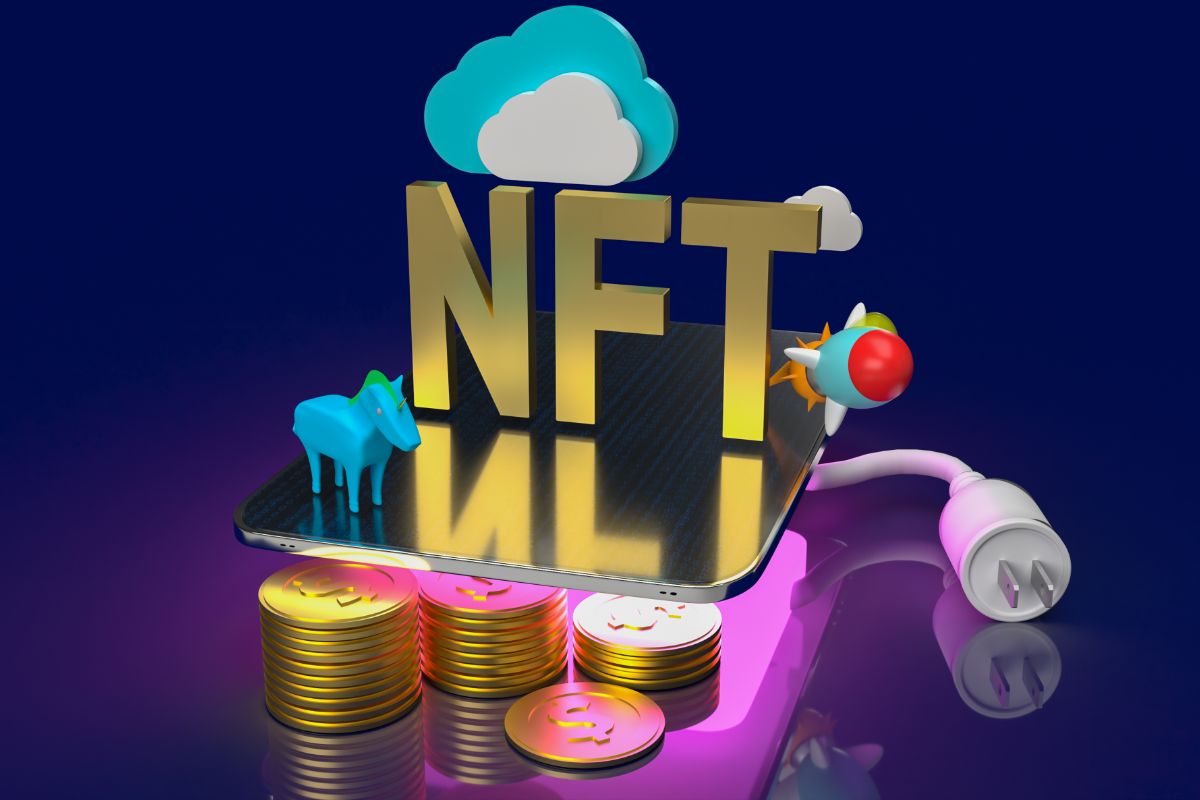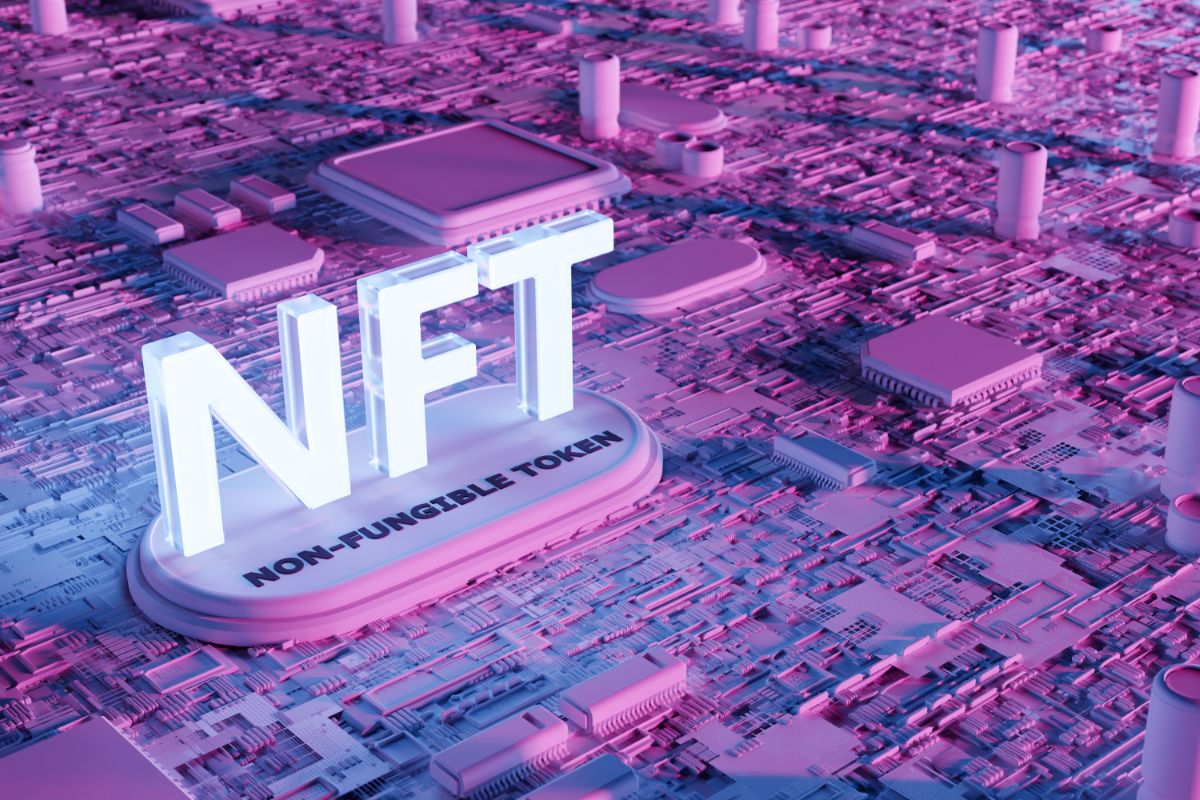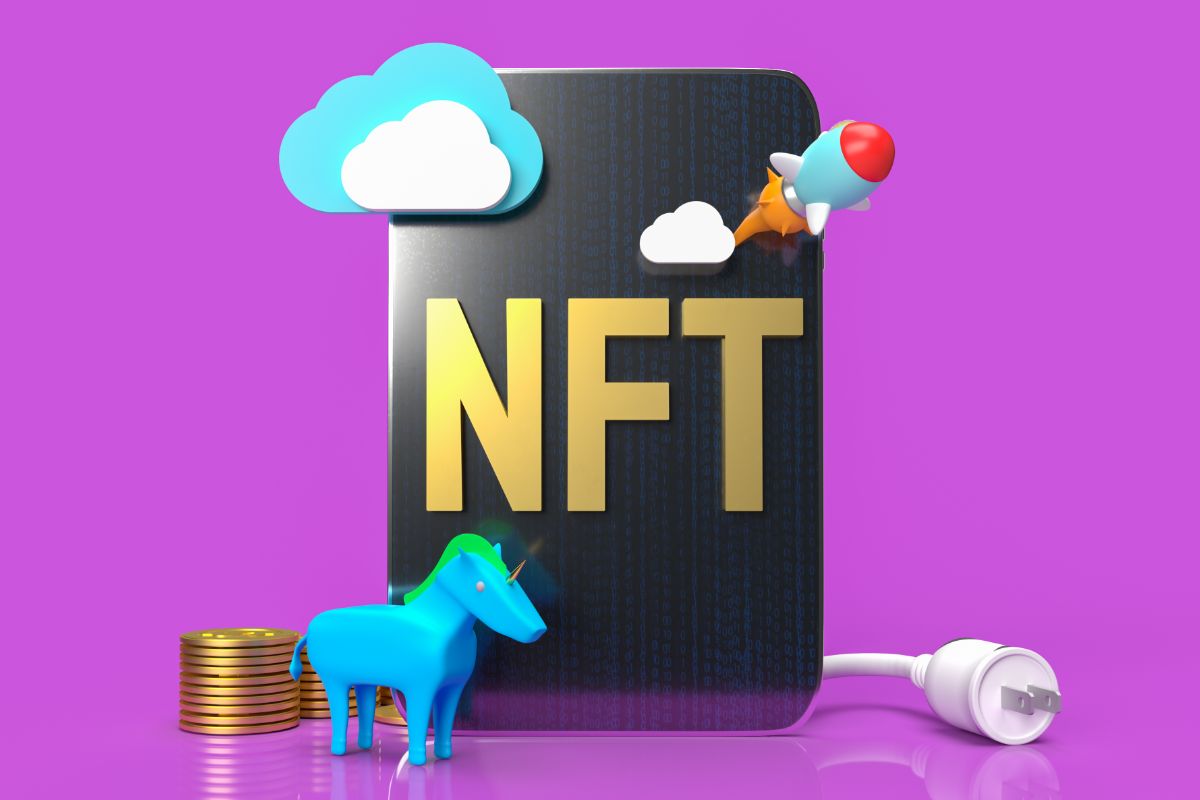If you’re new to the world of Cryptocurrency, specifically NFTs, Polygon punks can be a great place to start. After Cryptopunks, Solpunks, and Bunks, Polygon Punks are a recent addition to the polygon/Matic network.

The collection contains 10,000 NFTs that show attributes that make them unique and identifiable according to a defined rarity System.
If you’re looking to launch an exciting new NFT project and are curious about trading on the Polygon blockchain, this guide outlines what PolyGon Punks are and the best places to buy them.
There’s also a guide on the best ways to generate the most return on your asset, as it’s great to approach your project with some strategy.
What Are Polygon Punks?
Put simply, the complete collection was officially minted by the PolygonPunks website on August 3rd, 2021, becoming the first Punks to be minted on Polygon.
A PolygonPunk is a one-of-a-kind asset that is sold exclusively on the Polygon blockchain.
For the sake of fairness and to give everyone the chance to own a polygonPunk, the sales are random, and the identity of the PolygonPunk will remain hidden until the purchase is complete.
If you’re fortunate enough to get one of these NFTs at the mint price, you’ll receive a unique PolygonPunk with proof of ownership stored on the Polygon network.
Best Place To Buy Polygon Punks
Suppose you’ve missed out on getting one of these NFTs, then not to worry. You may not be able to get one at the mint cost, but there are sites such as Opensea and NFTrade that house collections of these tokens.
These sites allow you to easily browse thousands of these items with dropdown filters where you can search for attributes if you’re looking for a specific token or payment type.
If you’re interested in getting into the NFT game, you’ll have to load up on Polygon. Below are steps for you to get set up and ready so that you can browse through the marketplace with confidence
Step 1
Create A Trading Account: This step comes down to your personal preference on what type of interface works best for you.
The three most well-known cryptocurrency exchanges are Coinbase, Gemini, and Binance US. The interfaces of these exchange services may overwhelm some but can offer user-friendly, easy purchase options.
Step 2
Add A Payment Method: Once you’re set-up, go to the payment method box and connect a payment method. You can use a bank account or debit card, or you can even initiate a wire for convenient transfers.
Step 3
Start A Trade: Simply go to the token and select buy now or make an offer from the list of options.
Step 4
Select Polygon From The List Of Available Assets– You can make the process of finding it more accessible by typing it into the search bar. You can then open it to continue the purchase.
Step 5
Enter The Amount You Want To Buy– You can use this screen to input the amount you want to spend from your payment method. The application you’ve chosen will convert that into a Polygon amount.
Step 6
Finalize The Purchase: You’ll be able to preview your purchase to see the details so you can check that all looks good and correct. Confirm your purchase, and you’re set to go. You’ll have Polygon to make that offer for the token you’ve had your eye on.
Be aware, however, that when signing up for any of these services, you may be required to authenticate your identity for the sake of legitimacy, and the price you see your desired token may differ in price due to the estimated gas fee.
The value of the gas fee on your purchase will determine how long it will take to complete the transaction.
4 Best Places To Sell Polygon Punks
Now you’ve obtained your first PolygonPunk, or maybe you’ve already amassed a collection and are interested in how to maximize the value and want to sell them.
Many trading websites offer the most accessible marketplace to view other tokens or display your own. These websites also have drops of new collections from individuals and brands such as the LA kings and the UFC.
Below are some excellent options that may offer different marketplaces and options when you decide to part with your token for the best return.
Crypto
Founded in 2016,Crypto.com has already established itself in the cryptocurrency arena, offering up to 250 plus currencies at the true cost.
The most exciting thing, however, is the NFT marketplace that has been launched alongside their trading and cryptocurrency services. Having it all in the same ecosystem allows you to do more with your assets.
Pros
- It has an extensive list of supported cryptocurrencies, meaning you never have to switch to other sites to find what you’re looking for.
- Transparent, competitive fees with discounts available. This can look great on a portfolio or if you need a little more incentives to get started.
- It offers you support for an environment of cryptocurrency products. This means you can now stake, swap, and trade with an expanding NFT marketplace.
Cons
- It has a stock-like presentation that may put off new investors. To those unfamiliar with stock websites or trading, this site may require some time to learn about the layout to have the most optimal experience.
- You may not find the specific asset you are looking to buy or sell, with particular collections being exclusive to specific marketplaces.

OpenSea
Being the world’s first and largest marketplace for NFTs, it isn’t easy to downplay the significance of this site in what started as a niche market.
You can also find tokens across almost any category of NFTs, including art, gaming assets, trading cards, and collectibles, meaning the marketplace has everything for those who may be starting out on their NFT portfolio to the budding collector or enthusiast of digital art.
Pros
- Being the primary and secondary market for new mints and resales means less time you have to spend looking for that asset you’ve had your eye on.
- Commission rates are very competitive, meaning if you’ve created, minted, or resold an asset, you can maximize your return (see also ‘What Is The Nominal Rate Of Return On An Investment?‘).
- It has the most extensive selection of NFT styles of any platform, making it the go-to marketplace for those who are just dipping their toes into an emerging market.
Cons
- The site requires You to have an Ethereum digital wallet to use the Opensea platform. This could limit the flexibility and diversity of your portfolio.
- You can only pay using Cryptocurrency. If you’re looking for the cash amount or in an auction, you may have to spend time using a conversion tool.
NFTrade
After Opensea, NFTrade has the largest collection of NFTs by volume on the polygon blockchain. Specializing in being an exchange platform and cross-chain aggregator, it allows its users to create, buy, sell, and swap NFTs across Polygon, Ethereum, Binance Smart Chain, and Avalanche.
With a straightforward interface with options to filter collections, blockchains, and statuses, it can be a great place to start if you have some knowledge of internet markets or if the online store look appeals to you most.
Pros
- With the NFT aggregator, any NFT you’re looking for just clicks away, and you can set a minimum and maximum price, so you are shown assets that are relevant to you.
- With the inclusion of their escrow mechanism, you can trade NFTs securely, giving you peace of mind and fewer delays in the process, which can only be a good thing.
- NFTrade also has social features, meaning you can share your experiences and NFTs, as well as be part of a big thriving community.
Cons
- NFTrader is most effective when used in terms of speculation. The focus can be on price fluctuations which could make a starter in these markets quite apprehensive.
- If you’re looking to farm a currency from an NFT or if you’re looking to acquire collections or complex assets, you may need some guidance from advice provided outside of the website. This could be an additional headache you don’t need.
TreasureLand
This is another great choice if you’re looking for a multi-chain marketplace that has integration with the polygon network, quicker transactions, and the ability to see recent transactions, you can’t really go wrong with this marketplace.
The goal of Treasureland is to connect NFT creators and consumers in a decentralized way and build a blockchain that resembles that of sites like eBay.
It’s now easier to see hot collections, where you can see their values and can navigate to the listing pages with an easy-to-see table so you can track floor prices and how many trades have taken place.
Pros
- With integration to the Polygon network, gas prices are lower, which means you have more bargaining power over the speed of your transaction.
- It has a simple 4 step instruction process to get you set up, whether you are browsing through collections or looking to start a portfolio.
- It has a convenient evens page where you can see new collection drops and popular assets available. It can take the speculation out of the equation as you don’t need to do as much outside research.
Cons
- Trades on TreasureLand require a fee that is separate from gas fees. This may put off those who are looking for the most lucrative returns.
- Doesn’t accept deposits or payments by credit or debit cards or even PayPal. You would need a previous holding of the supported cryptocurrencies to trade here.
How To Profit From Your NFT
So you’ve set up your wallet, you have an excellent page to show off those assets, but now you want a good return on your asset. After all, as lovely as they look, they may not necessarily generate any interest just sitting there.
Of course, with any new and emerging marketplace, there are going to be fluctuations that might affect you for the worse or better.
Below are some ways you can profit from your NFT, some requiring long-term strategies and some research you may want to conduct on your own to understand better the market you’re in and the asset you own in the first place.

Flip Your NFT
This is the most common method of making a profit on your purchase and requires you to sell the asset quickly as the market increases in value.
Of course, buying the asset at the mint value is ideal because once the collection is sold out, you can resell it on the secondary market for more than you paid for it.
Being successful in this way depends on how aware you are of the market. It can also depend on the interest around these assets, so knowing your asset well and what trends appear can significantly increase your success. This can take practice, so that you may be a little disappointed at first.
Ultimately, if you’re buying assets at the mint price, it’s good practice to keep an eye on how many of that collection are left so you can flip it as soon as it sells out.
Selling Your NFT In The Short Term
If flipping your asset straight away isn’t convenient for you, you can hold onto the asset. A short-term investment (see also our guide to investing in Nike) usually involves selling the asset within one year of buying it. This is ideal for someone who has an asset that may have a brand attached to it that may not be established yet.
A pitfall to avoid here is that you don’t wait too long before selling because the market for that particular asset might decline further than the mint price you paid for it.
This is why you want to research your asset to see if it’s building any meaningful value. This makes sense if you happen to own more than one NFT in a collection, so there is only that market you have to keep an eye on.
Selling Your NFT In The Long Term
This method is the most challenging way to profit from your asset, but it can also be the most lucrative. This method means you intend to hold onto your asset for at least one year before selling it.
This method also requires the most research and work because you have to track the market and its changes over this period.
This method is probably most suited to those who have experience in these markets and are willing to take the risk that an NFT might lose its value. The risk comes from the fact that some NFT markets are still early in development, so that they can be very unpredictable.
Trade Your NFT For Another NFT
The best thing about the NFT community is that there are collectors as well as traders in the space. If you happen to have an NFT that you’re just not that interested in, or you don’t think you can get a good return, you can swap it for another NFT project that interests you.
If you can find a good deal with someone who is willing to trade, you have the potential here to gain more profit. However, you’re putting your trust in someone when trading, as you risk the possibility of getting a completely different or even missing asset.
Stake Your NFT For Passive Income
This method ensures that you receive some yield from your asset without having the risk of fluctuations in the market. This method works by depositing your NFT into a De-Fi protocol smart contract to generate a yield.
So the NFT is storing digital assets in the form of a stake and assigning those assets to those willing to maintain them.
This can provide you a share of reward for your asset, and on paper, it seems the most risk-averse way to generate some yield.
This may be useful to those who may have an asset they’ve had for longer than they would like and can find the people to maintain the asset’s upkeep.
The Bottom Line
The world of NFTs is an exciting new marketplace that is full of risk and reward. When looking around for NFTs, especially PolyPunks, you want to only pay as much as you are most comfortable with.
This way, if you are unfortunate to sell at a loss, it’s at a cost that you are better equipped to deal with, and of course, in this market, practice makes perfect.
If you are considering building a portfolio and want the most return, it wouldn’t hurt to get advice from an NFT advisor who is committed to your project and can help you realize your goals.
As with any emerging market, there are times that will surprise many, so doing your research and reaching out to those in the community is an excellent place to start.
And lastly, you want to have enthusiasm for your project as its interest and speculation is what will determine how you and others will value it when it comes to reselling it. Enjoy your portfolio.
- Dividend Growth Investing for Millennials - February 27, 2025
- The Ultimate Guide to Investing in Precious Metals Today - December 6, 2024
- Essential Cryptocurrency Trends: What You Need to Know - December 6, 2024

